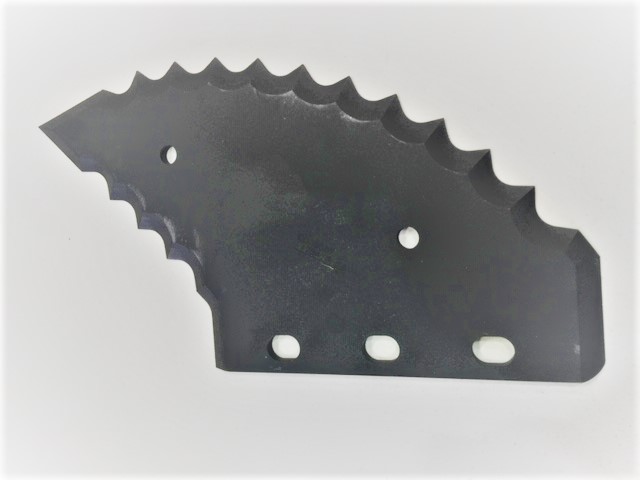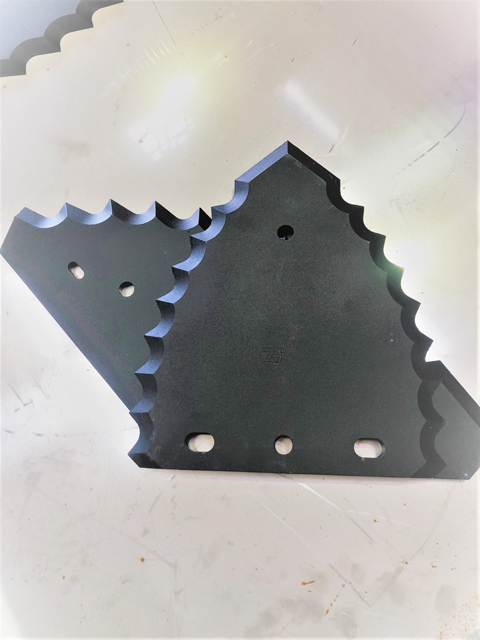Setting up Your Mixer for Round Bale Hay Rations
The advantage of vertical TMR mixers over other designs is their ability to process long stem feed ingredients. Round bales of dry or wrapped material are usually the most difficult to process. Large square bales and precut round bales can process much easier, because the bales fall apart as they process. Knowing how to set up your mixer for processing large round bales can get complicated. There are many factors that determine how well your Vertical TMR will process these bales. Because used mixers can have worn plow wings, knives and auger flighting, we will assume that you are starting with a new mixer or one with new components.
Items that can affect feed processing are:
- Feed restrictors. There are two restrictors, one located on the front left-hand side and one on the rear right-hand side of the mixer tub. Generally, the further you set the restrictors in, the faster the ration will process. However, if the restrictors are set too far in, the ration can be pushed up the side walls and spill out of the mixer. These restrictors can be flipped upside down for smaller rations.
- Knives. Cloverdale TMR manufactures four different knives. They are the Standard, Carbide tipped, Razorback and Lancer knives. Current mixers have ten possible knife locations and on nine of these, the knives can be set in or out. Adding knives and setting knives out, increases horse-power requirements, so you may have limits to what you can process. Because of these options, knife combinations are nearly endless. Our basic mixer order starts with five Standard knives. This works well for most rations. Adding knives or flaring knives out, makes the mixer more aggressive. Razorback knives are reversible and act like Standard knives in their normal position. If you flip them, they become very aggressive and pull bales apart. It is possible on some products such as barley and millet bales, that the Razorback knives will become plugged and they stop processing. Lancer knives are still very aggressive and can be used to eliminate some of the plugging issues. They are also reversible and can potentially double you knife life. These knives have 3.00” to 3.125” hole spacing with slotted end holes, so they can be used on many different brands of mixers. They are self-sharpening tungsten coated and serrated for more aggressive cutting. Carbide tipped knives are very durable and are an excellent choice for many rations. The carbide tips last much longer than tungsten coated, self-sharpening knives.
- Options. Hay rations are very bulky and you may need rubber side extensions, retaining chains, or even custom options. We offer extended taller steel side walls, larger discharge doors and wider discharges for these bulky rations.
As you can see, the options can be overwhelming. A good starting point for round bale rations, would be five Standard knives. Add two Razorback or Lancer knives in the number two and number four (from the top) hole position. Set the knives in the flared-in position.
The good news is that our dealers are very familiar with rations in their area. They have a pretty good idea of what you may experience. They have mixers in stock and are very willing to demo units so you can determine the best combination for your ration.

Standard Knife

Carbon Tipped Knife

Razorback Knife

Lancer Knife

Lancer Knife compared to Standard Knife
The following video is a modified 650 Cloverdale set up with 6 Standard, 2 Razorback and 2 Lancer knives on each auger. The side walls are 12 inches taller, the discharge door is larger and the conveyor is wider than a standard 650.
Three 5 ft. diameter balage bales and three 5 ft. diameter wrapped corn bales were processed. This was a mixer demonstration. Remove net wrap on bales before processing in the mixer. Total run time under 10 minutes.